Investigating Invasive Species
Exotic Insects that Threaten Agriculture and Human Health
Illinois sits at the crossroads of the country. Roads, rail lines, and waterways cut across its counties, providing pathways for transportation and trade. Though these routes have brought prosperity to the state, they have also enabled a threat to take hold, namely invasive species.
The Illinois Natural History Survey (INHS), part of the Prairie Research Institute at the University of Illinois Urbana-Champaign, has examined exotic and pest species since its founding in 1858, helping to provide the information needed to control existing invasions and prevent future ones.
This story highlighting insect invader research begins a series that will showcase a variety of INHS work on exotic species, from carp to clams.
Spongy moth (Lymantria dispar). Image by Susan Ellis, Bugwood.org.
Pests that plague plants: detecting and monitoring invasive agricultural pests
Exotic plant pests that threaten food security, farmers’ livelihoods, and the future of natural areas across the country are being introduced at an alarming rate. The Illinois Cooperative Agricultural Pest Survey (CAPS) program, led by INHS researcher Kelly Estes, focuses on the early detection and surveillance of these invaders in Illinois through targeted surveys and public education efforts.
“People don’t think Illinois is a high risk for invasive species introduction, because we’re in the Midwest; we’re surrounded by corn and soybeans,” said Estes. “But we actually rank fifth in the risk of introducing or having invasive species introduced.”
Each year the U.S. Department of Agriculture (USDA) Plant Protection and Quarantine (PPQ) program provides a National Priority Pest List that includes the exotic species most likely to inflict economic or ecological damage if introduced to the United States. Estes reviews this list and, taking into account Illinois’ climate and its array of agricultural crops and natural habitats, compiles an abridged, state-specific list of invasive species to target during CAPS program surveys. Some of these species are known pests in Illinois, while others are not known to occur.
Priority pests in Illinois have changed over time, but notable examples include the emerald ash borer, Asian longhorn beetle, spongy moth, and, most recently, the Old World bollworm and spotted lanternfly.
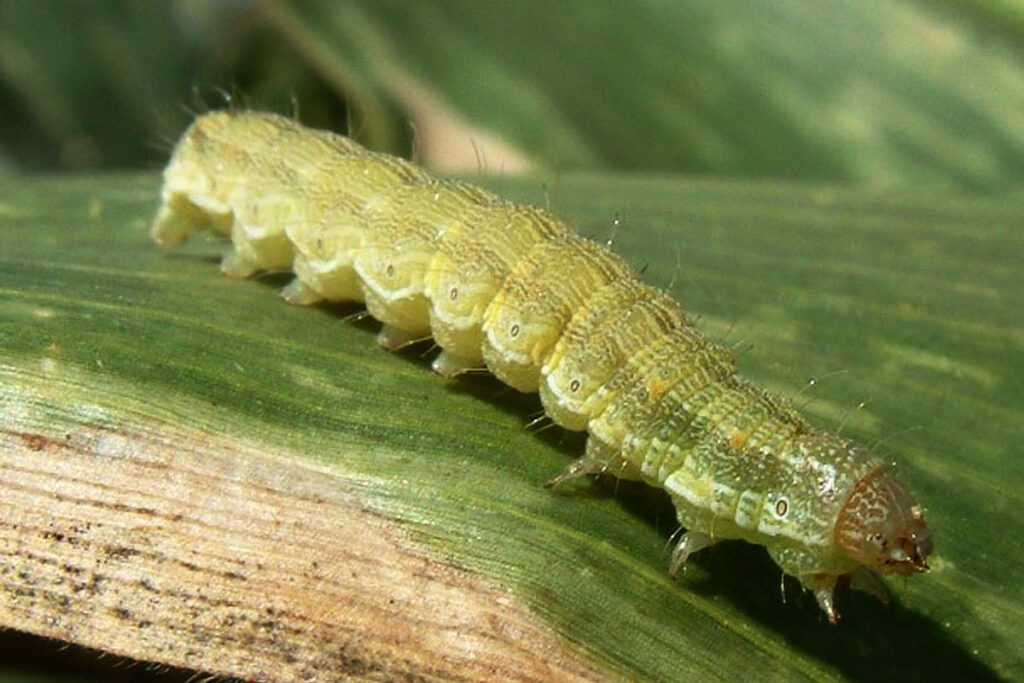
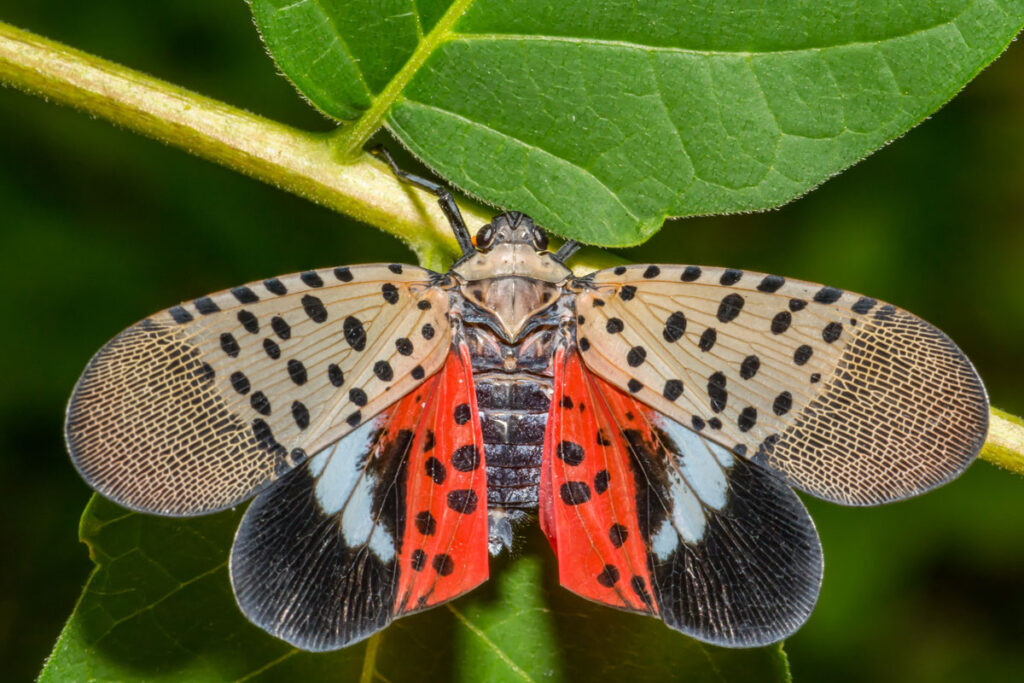
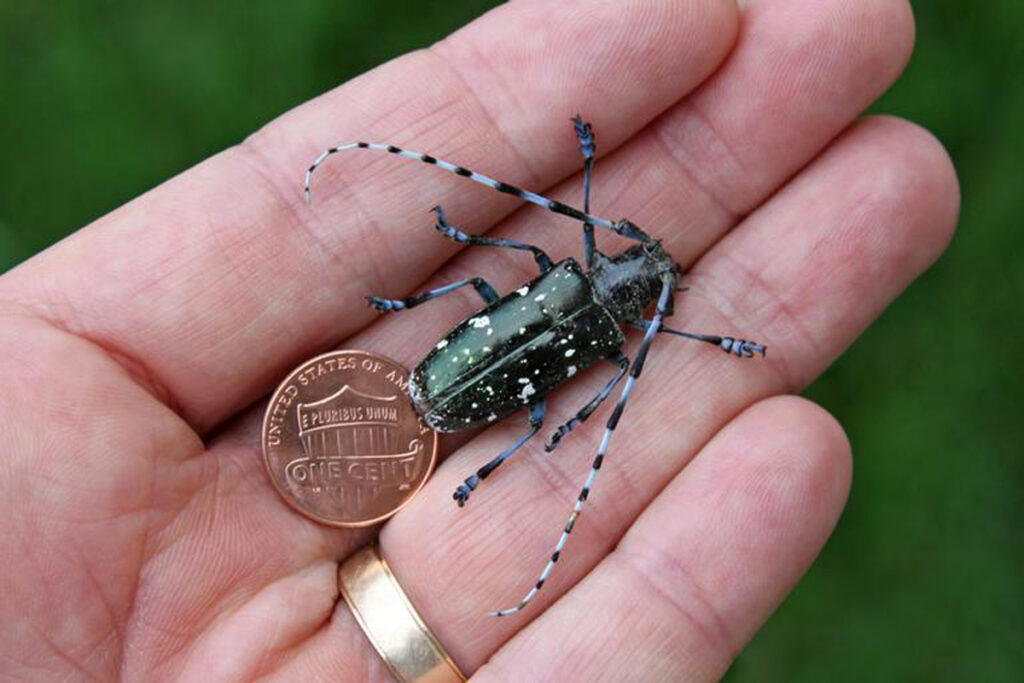
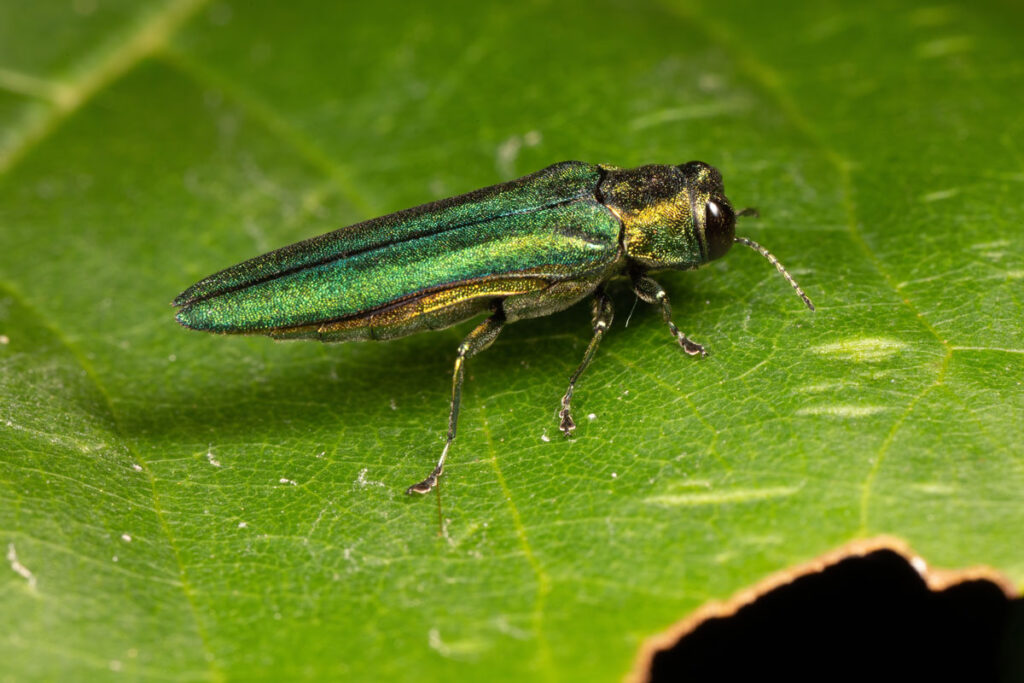
Estes coordinates two types of CAPS program surveys to detect and monitor the invasion of priority pests—pathway surveys, which are strategically placed in areas where new invasive species are more likely to be introduced, and commodity surveys, which are positioned in places like corn and soybean fields in Illinois.
At the earliest stages of invasion, exotic species are generally few and far between in their ultimate destinations, such as agricultural crop fields or natural areas, and may not be detectable in commodity surveys.
That’s where pathway surveys come in.
“We look at intermodal areas and different ways that these invasive species could be moved in,” Estes said.
When a new or emerging pest is detected, further surveys are done to determine how widespread the invasion is, and, depending on the pest, quarantines and eradication plans are put in place.
Aside from plant pest detections, pest surveys can also provide proof that areas are free of specific exotic species, which helps facilitate the safe export of Illinois’ agricultural products.
“My ability to survey and have negative data is important for exporting. Any negative survey data can be referenced on export documents for producers shipping plant material to a receiving state or country concerned with a given pest,” Estes explained.
With so much ground to cover across Illinois, Estes and other CAPS program coordinators also rely on the general public to be their eyes and ears. Estes actively engages with Illinoisans, teaching them how to identify invasive pests and fielding their questions about possible exotic species sightings.
The CAPS program is a joint effort between several state and federal agencies, including INHS, Illinois Department of Agriculture, and the USDA PPQ program.
Tiger mosquito (Aedes albopictus).
Mosquito on the move: tracking and testing the tiger mosquito for human disease agents
In 1985, the tiger mosquito (Aedes albopictus) traveled from the forest edges of Southeast Asia to the United States, most likely by stowing away aboard shipments of used tires into Texas. Soon after, it was detected in Illinois. Now, nearly 40 years later, the tiger mosquito has become widespread across southern and central portions of the state, according to research and surveillance efforts by INHS Medical Entomology Lab (MEL) scientists and their collaborators and colleagues at municipal mosquito abatement districts, local health departments, and Illinois Department of Public Health (IDPH).
The tiger mosquito’s spread is cause for concern, as it can carry and transmit a wide range of viruses to humans, including La Crosse encephalitis, chikungunya, Zika, and dengue, and other disease agents, like dog heartworm, to domestic and wild animals.
MEL, which conducts statewide monitoring and surveillance of mosquitoes and ticks, is actively gathering information on the tiger mosquito’s invasion biology to help inform the species’ tracking and control and to improve the detection and prevention of mosquito-borne diseases.
A 2020 study by MEL director Chris Stone and colleagues drew on data from a variety of sources to examine the first 30 years (1986–2015) of the tiger mosquito’s invasion of Illinois. The research team reported that by 2015 the tiger mosquito had been observed in 40 of Illinois’ 102 counties, with the majority of occurrences in the southern two-thirds of the state. The species was also detected in Cook County in 1987, though no additional sightings were reported until 2016.
MEL field surveys in 2016 and 2017 revealed that the tiger mosquito has become established in nine additional counties in southeastern Illinois. These findings were published in Frontiers in Public Health in 2022.
The tiger mosquito is continuing to spread and increase in abundance, said Stone, based on data he’s seeing from MEL, health departments, and mosquito abatement districts.
Aside from documenting distribution, the 2020 and 2022 MEL studies also investigated how the tiger mosquito is managing to spread and persist within Illinois, a state with relatively cold winter temperatures that might prevent the mosquitoes from surviving throughout the year.
Data from the 2020 study indicate that some Illinois counties are likely experiencing repeated annual introductions from neighboring counties, increasing the probability that the tiger mosquito will become successfully established further northward over time. Further, genetic data suggest that the tiger mosquito has been introduced to Illinois multiple times from different places and new introductions from outside Illinois could still be occurring.
Habitat preference may also play a part.
MEL’s 2022 study looked at how mosquito communities vary across different habitat types within 17 southeastern Illinois counties. The study showed that the tiger mosquito typically inhabits urban landscapes—areas that tend to have slightly warmer winter temperatures than adjacent rural locations due to abundant roads and concrete. Urban areas also offer prime overwintering habitats like subways and sewer corridors.
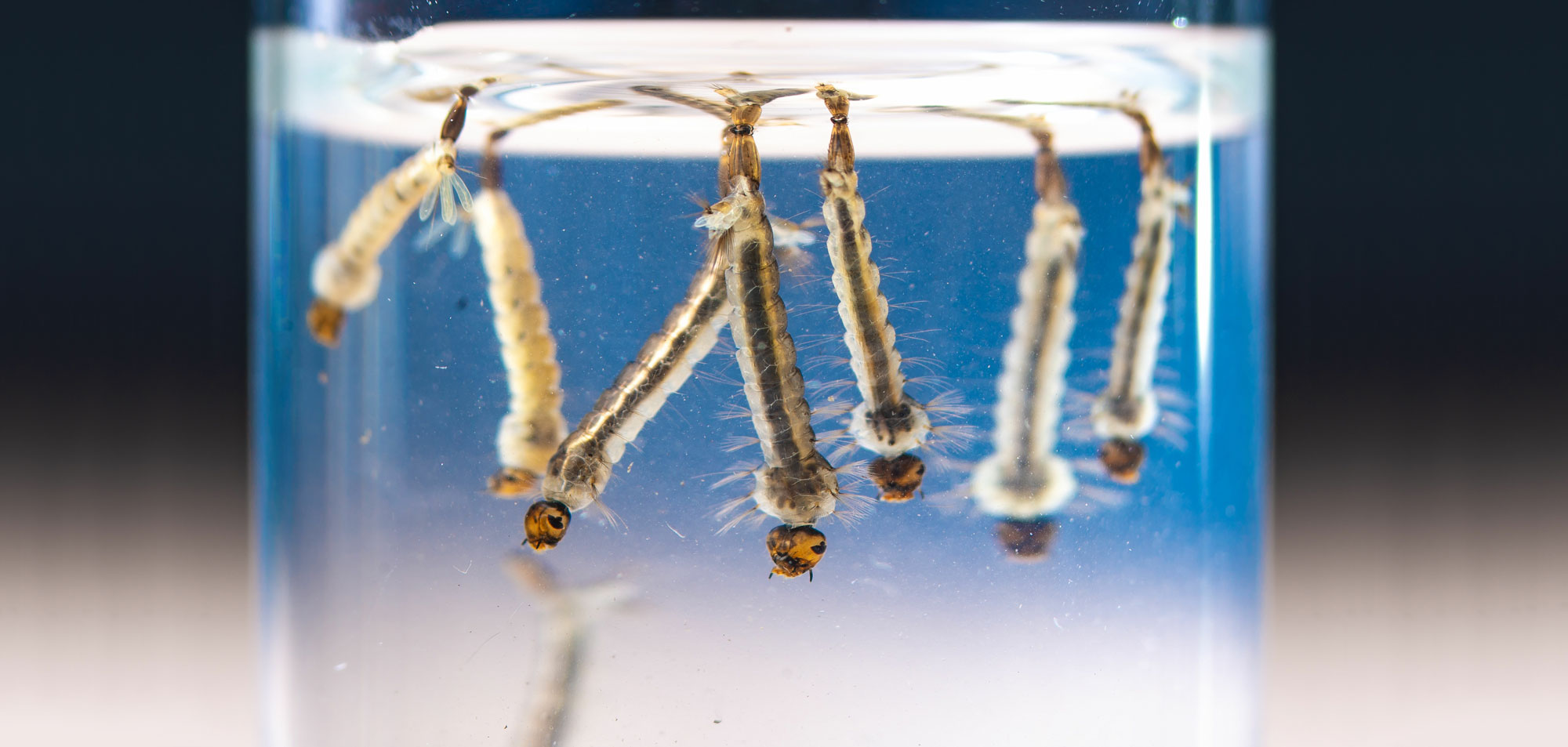
Tiger mosquito larvae.
Unfortunately, we do not have a silver bullet for controlling container-breeding species like the tiger mosquito, said Holly Tuten, MEL vector ecologist.
Tiger mosquitoes can be difficult to control as larvae due to their use of cryptic and dispersed habitats. Further, the adults are most active during the day rather than after dusk, when insecticides targeting West Nile virus vectors are more likely to be used.
Insecticide resistance could also pose a problem.
MEL, in collaboration with IDPH, has been gathering baseline data on insecticide resistance among mosquito species found in Illinois since 2017. When MEL looked at levels of insecticide resistance in the tiger mosquito at the start of these studies, they found that 28% of sampled tiger mosquito populations showed signs of resistance to permethrin, a common insecticide that homeowners might purchase to use in their yards, Stone said. The lab plans to pursue updated insecticide resistance testing on the species this year.
According to Tuten, encouraging people to get rid of standing water in containers in their yards and parks is one of our best defenses against the tiger mosquito and other container-breeding species. These containers can range in size from flower pot saucers to used tires to buckets and plastic trash, like bottles.
It is likely that the tiger mosquito will not be the last invasive, disease-causing mosquito entering Illinois.
“Some other invasive Aedes species have just been picked up in the last few years—one in Florida, one in California. Living in this era of mass transit, it’s just going to be this continuing story of the invasion of container breeders,” Tuten said. “So it’s albopictus now, but in 10 years, we might have another ‘friend’ in the backyard.”